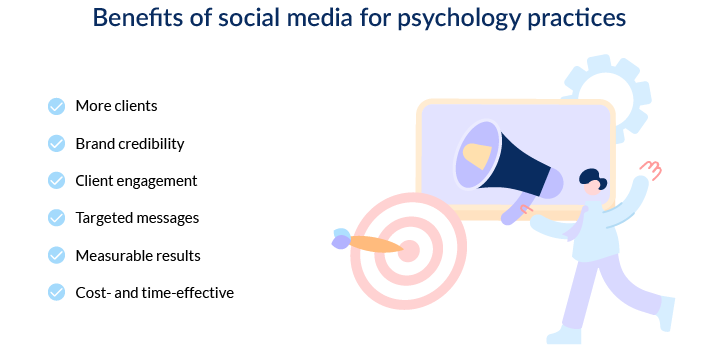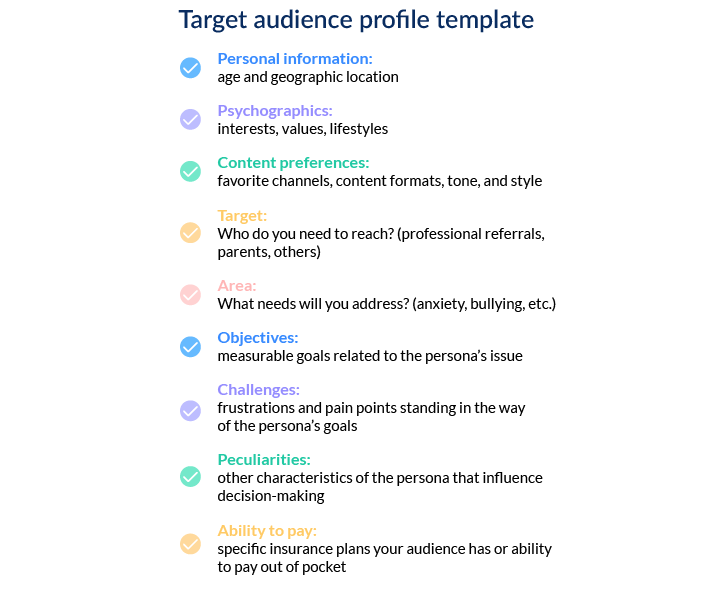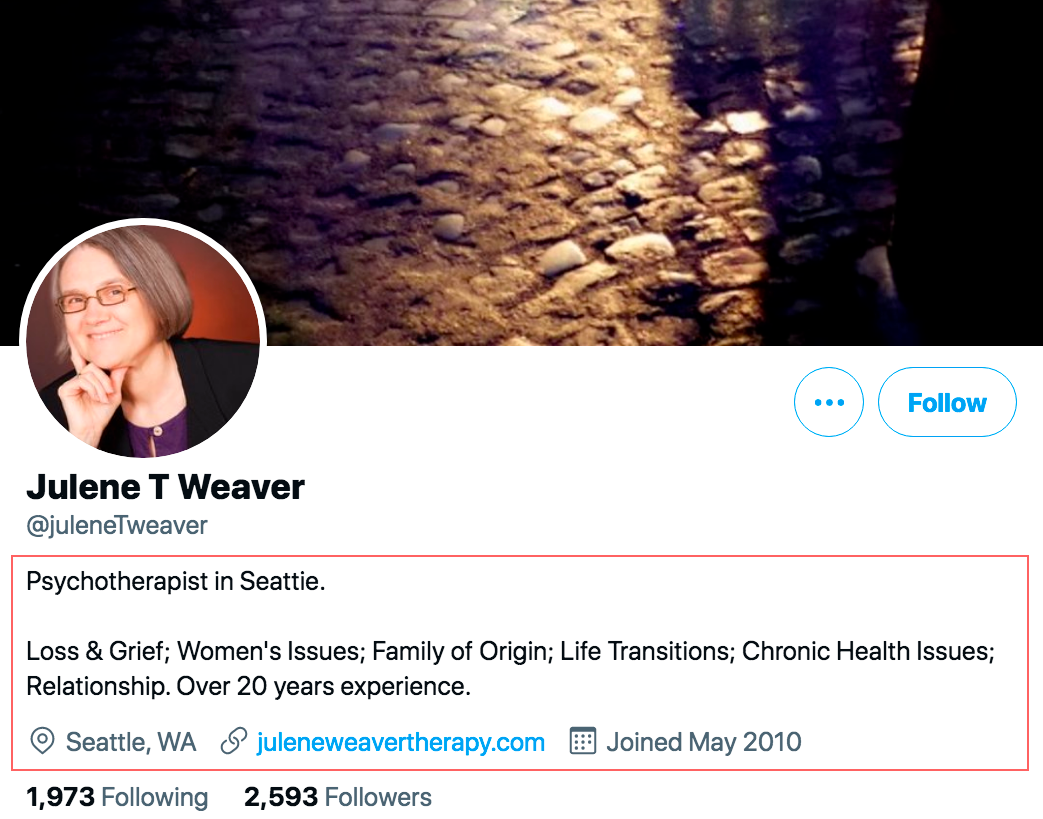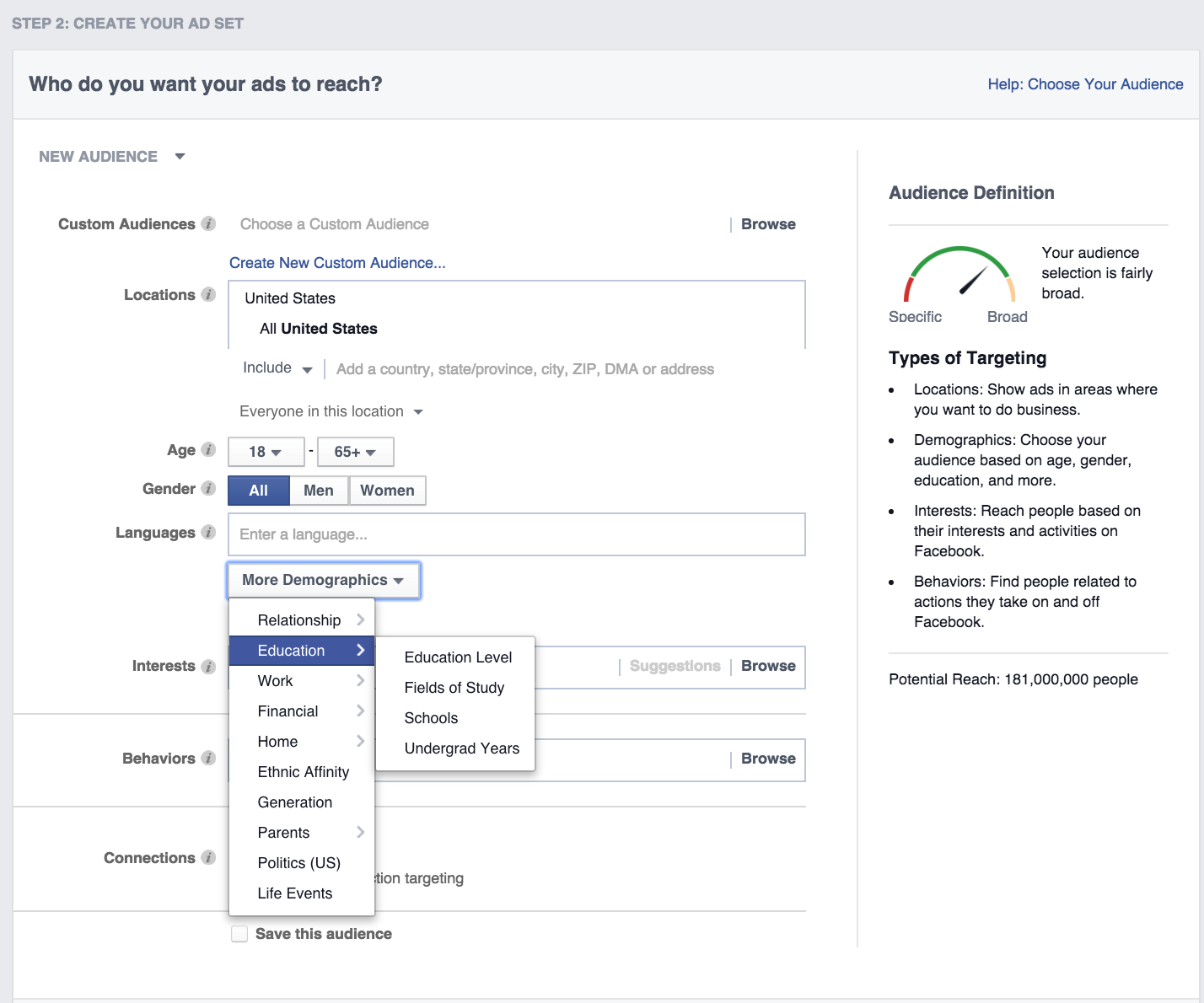Technology has changed the way psychologists practice. It has erased geographical barriers and brought clients closer thanks to video sessions. To market your practice to new audiences and prospects, you need to meet them where they spend most of their time online — namely, on social networks. According to Statista, about 70% of the US population has a social media account. Online marketing via social networking sites has proven to be a key strategy for gaining people’s trust and converting them to clients.
Let’s find out how social media can help you market your private practice.
Why should a psychologist use social media?
Social media is your mechanism to increase reach, engage with potential customers, build your brand and reputation, educate your followers, and make them your clients.
- 78% of small businesses attract new customers through social media
- 80% of US social network users prefer to connect to brands through Facebook (Intechnic)
The main idea of social media is that you can interact with people. On social media, you can prove your proficiency and increase your audience, distributing information that is helpful to users in general (e.g. via tweets or blogs) or to colleagues (e.g. as part of a social networking group on LinkedIn). Secondly, social media is a place to launch your marketing strategy and advertise your services to your target audience.

With the social media marketing for psychologist, private practices have the potential to thrive on conversions. That’s why your social media accounts should not only inform clients but also sell your services to them by letting them book sessions. Thanks to relevant and authoritative content and social media mechanics, you can attract prospects and make them your clients. How can you use social media correctly and effectively? Let’s find out.
How to market your private practice on social media
Marketing tips for psychologists often include social media as one of the most powerful things you can do, but it can be intimidating to start. You need to be aware of the ethical considerations, client confidentiality, HIPAA regulations, etc. All of these things can be intimidating.
However, to fear social media is to cut off a really considerable part of prospects and important channels of communication. Social media is a big waypoint for your prospects in the journey to finding the right therapist. So how can you use social media correctly and effectively? We break down the process step by step. Read on!
1. Choose a social media platform that fits your needs and goals
There are so many social media platforms that can help you market your practice. But you shouldn’t rush to create an account on each and every social network. The social networking platform you should embrace depends on your specialty and your goals.
Here is a list of social media platforms that have the most traction. Find out how they can help your practice.
Creating a Facebook business Page should be the first step for any new business, whether it’s a therapy practice or anything else. However, social media marketing for psychologists becomes a challenge with regard to client confidentiality. This network must be used very carefully given all the ethical considerations.
On Facebook, you can publish helpful content to engage with your clients and prospects, advertise your practice using Facebook Ads Manager, and share your contact details and a booking link. Users expect to find such information on business Pages.
What it’s good for: Facebook fits any type of business and all types of communication with a target audience. The marketing opportunities on this social network deserve an honorable mention.
Great examples: Dr.Chloe, Maya Benattar
Twitter is a comfortable way to keep your followers informed and engaged without demanding much of their time or energy. Twitter’s recent algorithm change makes relevant content show up more often in users’ feeds. This means that if your followers are interested in your account or any other content related to psychology, they will see your posts more often. Besides, Twitter is great for networking and expanding your professional contacts.
What it’s good for: Twitter is good for connecting with other specialists, learning and sharing news, and quickly sharing content with your target audience.
Great examples: Evolve Therapy (@evolvetherapymn), Dr. Cheryl Arutt (@drcherylarutt)
According to Hootsuite, Instagram has over 1 billion monthly active users, with over 500 million users on the app every day. That said, there are many ways to connect with your prospects on Instagram. A branded account for your practice, relevant hashtags, and useful content can help you get your target audience’s attention. Besides, since Instagram is photo- and video-oriented, you have a unique opportunity to live stream and engage with your audience, answering questions and proving your expertise.
What it’s good for: Even though it’s not a therapist directory, Instagram is a great tool to build a long-lasting relationship with your audience and make a name for yourself among your community. When someone decides they might need a psychologist, you’ll be on their radar, and they might reach out to you.
Great example: Dr.Therese
LinkedIn is a must-have tool for building and maintaining professional connections. Building business connections can open the door to new sources of client referrals — for example, medical providers, coaches, or other therapists. With LinkedIn, you can become the practice to whom other specialists refer patients.
On LinkedIn, you can share your work experience, feature recommendations from colleagues, and participate in industry-specific groups. Apart from that, if you organize any sort of professional event, LinkedIn can be a great place to advertise it.
What it’s good for: LinkedIn is a powerful tool to build your referral network. On LinkedIn, you can network with potential clients, professionals, and possible referral sources.
Great examples: Dr. KeelyKolmes, Dr. Chloe Carmichael
YouTube
A great marketing strategy for your practice is video blogging and creating educational content. This will help you gain credibility, establish trust with prospects, and get more clients to your practice. According to Semrush, YouTube is the second most visited site in the US and the number one social networking website, with almost 4 billion visitors monthly.


This is not a surprise given that YouTube has content for all types of audiences. While marketing your private practice, you can start an educational blog covering complex topics or create a vlog for answering popular questions. Just find the right fit with your audience and your specialty.
What it’s good for: Thanks to video blogging, you can share your expertise worldwide, develop your brand, and help people who can’t attend your sessions.
Great examples: Psych2Go, Kati Morton, Inner Integration, Julia Kristina Counselling, The Psych Show
Start small. It’s better to choose one or two social media channels, master them, and then build up over time.
2. Define your niche
The riches are in the niches. To market your private practice successfully, you need to know your audience. You can’t sell your therapy services to just anyone. If you sell to everyone, you’ll end up selling to no one.
What’s in a niche?
It can be scary to limit your private practice to one area of counseling. You might get deceived by thinking that when you select a niche, you reach fewer people. However, when you niche down, more prospects will choose you because you’ll stand out as an expert. Patients tend to search for experts to handle specific problems.
Choosing a niche usually involves targeting a certain:
- Age group (X)
- Problem (Y)
- Outcome (Z)
A therapeutic approach could also be included in your niche. However, people are rarely concerned about your approach and choose therapists based on the criteria above.
You can use this template to define your niche:

Taking into account the above-mentioned criteria and your specialty, you can define your niche. First, decide on your target audience and the issues you will help them with. Do you specialize in teenagers and adolescents suffering from depression? Maybe your clients are young women suffering burnout due to work-related stress? Or do you help men who are trying to cope with separation and divorce?
For example, your niche may be the following:
“I help teens (X) who feel weighed down by anxiety and depression (Y) to build confidence, gain insight, and find happiness (Z).”
or
“I help adults (X) who have gone through a divorce (Y) to deal with depression, grief, anger, trauma, and family relationship problems (Z).”
This simple formula will help you define your niche and effectively reach your target audience.
Create a detailed portrait of your target audience
Don’t fear that niching means you can only counsel a certain population. You can create several target audience profiles. Here are some ideas of what you can include in a target audience profile:

As soon as you fill in this information for all your target personas, you’ll be able to create specific content to meet their needs, solve their pain points, and target your audience with the help of ads. Targeted ads increase your chances of transforming a social media user into your client. We’ll talk more about targeted ads later in this post.
3. Separate the personal from the professional
As a mental health professional, you need to be really careful with managing your boundaries and your client relationships.
First, you have to have a separate personal profile on social media. You should use it for communicating with family, friends, and colleagues only. Besides, on some social networks, having a personal profile is a must. For example, on Facebook, you can’t have a business Page before you create a personal profile.
Second, you need a business account to market your private practice. Without a business account, you risk blurring professional and personal boundaries. Using your business account, you can engage with your audience and share your professional knowledge.
4. Manage your privacy settings
Your personal page must have the highest level of privacy settings to protect yourself and your clients’ safety. Think twice about the kinds of information you want to be available to anyone. In most cases, it’s best to hide your personal profile from the public. Your clients, prospects, or their family members are likely to search for you on the internet and find your social media accounts. There is a high risk they might consider the content you publish “unprofessional” from their personal point of view.

Some clients may do more than a Google search: they may join social networking sites, join professional lists/chat rooms, or pay for online background checks.

Besides, you can choose who can send you a friend or follow request. You can also determine who can look you up — this includes your personal information like an email address and phone number.
Here’s a brief checklist of how to configure the privacy settings on your social media profiles:
- Friend carefully. Make thoughtful decisions about who you accept as a friend and thus grant access to your personal information.
- Hide your personal profile. Consider some form of restrictions to your online profiles, such as making them private or giving friend-only access.
- Post thoughtfully. Keep in mind that whatever you share online may be available to numerous individuals, and once it’s out there, it may be impossible to take it back.
- Never have a dual relationship. Consider online relationships similar to in-person relationships with clients and former clients. Don’t overlook the potential impact of online relationships on professional ones.
- Mind professional boundaries. Never access clients’ personal information without first obtaining their permission.
- Consult. Follow the APA Ethics Code and consult with colleagues to guide decision-making.
You should configure privacy settings on your business account as well. You can also limit interaction with followers as much as necessary. For instance, if you work with high-risk groups, you can set up your social media profiles so that no one can comment or message you.
Pro tip: Regularly check your privacy settings, as social media platform updates can reset them.
5. Fill in your social media profile
Your social media profile should include information a prospect is expecting to find to get to know you better, i.e. your private practice’s name or your real name, a short bio, a professional photo, your specialization, and a link to your booking page.
Let’s get down to details:
- Name. Use your real name if you want to develop (or already have) a personal brand. If your private practice has a name, it’s better to use it, as people might not be able to associate you with your practice. Keep your name consistent across all social media platforms, as it might be confusing if you use your given name on Facebook and your practice name on Instagram.
- URL. It’s possible to customize the URL of your page on most social networks. Make sure to change it to your name or your practice’s name instead of a random string of numbers and letters. For example, create a URL like https://www.facebook.com/DrSteveLaurie or https://twitter.com/NewHorizons.
- Profile photo. If you’ve created a personal business page to develop a personal brand, you should go with a professional headshot. How else should people remember you? In the case of a private practice, use a logo. Once again, be consistent and use the same profile picture across all your social media accounts.
- Add a link to your website. The idea behind social media pages for your private practice is to lead your prospects to your website, where they will become your clients. Your social media page is like a movie trailer, while the website is the movie itself. Make sure your link is front and center so people can find it.
Don’t have a website yet? No problem. You can build a website in a day using comprehensible website builders with ready-made templates. Read more about how to build a therapy website in our article on creating websites for private practices.
- Add a booking page. A booking page is a must for your social media profile to convert prospects. It’s an easy way for your clients to see your availability and schedule a meeting with you in a click. The ExpertBox widget can help you deliver a comprehensive client experience at the peak of potential clients’ interest.
- Background image. It’s a good idea to add a banner to your page that conveys a message — showcasing your service, a book, contact information, awards, a recent video or podcast, or whatever else can promote you as a specialist.


- Bio. For Facebook or LinkedIn, you can develop extended copy where you can pitch your services and explain what you do. However, be to the point and add only information that is useful for your prospects. Take a look at the examples below and compare the description on the left with the description on the right.
| Insufficient information | Useful information |
|---|---|
|
Hannah Nickson My goal is to help my clients know themselves better. I see therapy as a joint venture where our knowledge and skills are combined to create solutions. A good therapeutic relationship includes trust, authenticity, freedom, and positive outcomes. I have specialized training in using the creative process to explore the conscious and unconscious, discovering feelings and experiences where there are no words. |
Henry Wentz I’m a Marriage and Family Therapist in New York. I’ve provided therapy services for seven years in outpatient, home, and treatment settings. My clients are families, children, and teens. I address depression, anxiety, OCD, grief, anger, trauma, and family relational problems. I have special training and interest in working with trauma providing EMDR therapy as a helping aid. I’ve taken extensive coursework in attachment and bonding, hypnotherapy, and neurobiology. My goal is to help families move towards healthier relationships. |
The difference between Hannah’s and Henry’s bios is striking and meaningful for prospects. In the example on the left, there’s nothing that tells readers that Hannah Nickson is a therapist. In Hannah’s description, a prospect can’t identify the kinds of conditions she treats and where she works.
The bio on the right is an excellent example of a text that markets a specialist. Here, we can see the therapist’s specialty, place of work, target audience, conditions treated, and even approaches used. With such a bio, if a prospect googles “New York family therapist for depression,” they are likely to find Henry Wentz.
Twitter and Instagram let you add only a short description, so use your words wisely.


6. Publish useful content
On social media, you can share recycled content from your blog to attract and engage followers. Always include links to your blog posts to lead prospects to your blog. Remember about the type of content to post — Facebook and Twitter attract people who might be interested in your services, while LinkedIn is more about professional networking.
Pro tip: Never assist clients on social media. There’s a special and secure place to help people — your office.
Did you read an interesting article about pets helping to combat anxiety? Post it! Did someone you’re following on Twitter post a link to a great article? Retweet it! Did you write a blog post? Post the link on all your social media pages. Social media for therapists is one of the main tools to engage with the audience.
It might be tempting to narrate a story about ways to combat mental issues using real-life examples from your practice. However, you should never disclose personal information about individuals online or discuss a specific patient on social media, even if you change names and circumstances. There is a high risk that available information will help your followers work out who you’re talking about. Maintain confidentiality while online at the same level you do in face-to-face work.
Remember that the purpose of using social media is to market yourself as a specialist and your private practice. You might be wondering how posting someone else’s blogs or links helps your therapy practice. The idea is that you’re posting interesting, relevant content that attracts likes and followers. You’re giving your followers great content, so they’re willing to listen.
While creating content for social media, stick to the following rules:
- Always use everyday language and explain medical terms when creating content for a general audience.
- If you post news or refer to a study, always add a link.
- Add CTAs and catchy phrases to make followers go on reading or watching your content.
- Be brief and to the point, and leave long reads for your blog.
- Edit your copy and check for grammatical errors.
- Use hashtags for keywords.
7. Get your prospects’ attention
All social media platforms described in this post have ad managers. With Facebook Ads Manager, you can get huge results for just a few dollars by launching interest-driven ads to provide something of value that your prospects are interested in. Artificial intelligence and algorithms personalize the user newsfeed, recommending posts on related topics or videos for more engagement opportunities with your practice.
The trick here is that people don’t go on social networks to find a therapist; however, they may stumble upon relevant content, get interested in the author, start reading or watching their publications or videos, become convinced that the author is a credible expert, and later come to that therapist when they’re in need.
Ads take people one step closer to working with you. They can bring you a like for your page, a blog repost, a visit to your website, a booking on your calendar — whatever is next in the client’s journey.
Ethical and legal considerations of ads
Even though advertising is not prohibited, the APA recommends sticking to the Ethical Principles of Psychologists and Code of Conduct while advertising (see Section 5). It states that a psychologist may not make false, fraudulent, or deceptive statements about their practice, research, or work activities.
Ad prohibitions may vary by state. Contact your state licensing board and your state, provincial, or territorial psychological association to confirm restrictions.
Here’s a checklist for you to play it safe when advertising your private practice:

How to target social media users
To target your prospects correctly, use the portrait of your target audience you created in the second step. The portrait’s key points correspond to all the targeting settings that ad managers offer.
We will take Facebook Ads Manager as an example. Facebook has detailed targeting settings, letting you reach your ideal customer with the precision of a surgeon.

In Ads Manager, you can target users by location, age, gender, language, demographics, areas of interest, behaviors (e.g. those who are already looking for psychological insights or services), and connections.
There are other targeting options you should consider setting as well. For instance, targeting users by income level will be massively more effective than trying to target everyone. If you target an audience of a certain age and in a certain location but they can’t afford your services, you’re going to waste money on ads that will bring no potential clients.
Besides, you can focus on where your audience works. If you help people with work-related stress and burnout, you can target users who work in industries or positions where stress and burnout are common.
You can target any audience according to your specialty, as you know what their problems are and where these problems come from, so you can choose the relevant targeting categories. If you deal with teenagers and adolescents, your choice for targeting might be 18- to 25-year olds and parents of teens.
Targeting options in ad managers are the silver bullet to reaching your ideal client. The more narrowly you define your audience, the more chances you’ll have to reach your audience and interact with them. Go ahead and learn every targeting option in your ad manager.
Want to know more tactics to market your private practice? Learn the 18 ways to attract clients.
8. Use a call to action (CTA)
A call to action, or CTA, is a short directive to your audience. CTAs are buttons and compelling messages at the end of posts and videos. Think about what you want people to do when they finish reading your post or watching your video.


Do you want your followers to leave a comment? Watch another related video of yours? Visit your website? Book a session? Get a free mental health checklist by joining your email list? A call to action offers an opportunity for people to continue engaging with you and continue building trust as you help them out.
9. Follow ethical guidelines
Social media lends itself to a multitude of possible ethical issues. While running social media pages, you may unwillingly disclose your clients or blur professional and personal boundaries.

The APA has developed an Ethical Principles of Psychologists and Code of Conduct publication that is applicable to marketing your private practice online. In any case, a psychologist should put their existing clients’ needs first. That means maintaining confidentiality when communicating with clients on social media or posting any kind of content anywhere on the web.
The APA has also published an article on “Best Practices for an Online World,” where they characterize the online world as pervasive with incidental contact, inevitable self-disclosure, and unavoidable multiple relationships. The article is rather thorough regarding how to navigate these multiple relationships on social media, so make sure to check it out to follow best practices for psychologists.
Put simply, you should never follow or accept friend requests from clients or potential clients on your personal profiles. Additionally, you should inform your clients about the possible risks of following your social media accounts.
We’ve collected the most important rules to stick to while managing your social media accounts:
- Never friend your clients from your private Facebook profile.
- Never post case studies about your clients on social media.
- Never communicate with clients on social media, as the platform isn’t HIPAA secure. Instead, send a welcoming message describing your social media policy, tell the client that you’d be happy to discuss their issue in detail during a session, and add a link to your booking page.
- Never have clinical discussions or debates on social media.
- Never enter into dual relationships with your clients or followers. There is a risk that such relationships may impair your objectivity, competency, or effectiveness.
- Never ask for testimonials. Your clients may be vulnerable to undue influence.
- Always inform your clients about your social media policy.
We strongly recommend referring to the APA’s Ethical Principles of Psychologists and Code of Conduct any time you have doubts about your actions online. Apart from following the APA’s Ethical Principles, you should create your own social media policy.
10. Develop and share your own social media policy with clients
A strict and clear personal social media policy is a must if you want to market your private practice on the internet. The APA suggests that every psychologist implement their own social media policy as part of the informed consent process. The main reason is to protect clients’ privacy and confidentiality.
It’s up to you what to include in your policy. Just make sure it doesn’t violate APA guidelines. The policy should at the very least acknowledge the risks and benefits of using social media and other technology. Meanwhile, your policy could lay out your expectations for using such platforms, outline what actions you consider acceptable for your practice, and how you treat friending, fanning, following, and interacting on social media, on business review sites, in emails, and in text messages. You should also tell clients that you don’t look for any personal information about your clients on the internet unless they give you their consent or it’s part of treatment. Share this with every client to make them aware of the rules and the consequences of not following them.
You should base your own policy on existing policies. If you don’t know where to start, take a look at the social media policy developed by psychologist Keely Kolmes.
Summing up
To market your therapy practice using social media, it’s important to remember to always keep your client’s privacy at the top of your mind. Assuming you’re clear on the ethics, the next thing to remember is to create and share useful content that supports your specialty. We’ve collected all our tips in one checklist.
Practical tips for effective social media marketing:
- Define your goals
- Create useful, authoritative content
- Optimize your social media profiles
- Use attractive visuals
- Add value to your online community
- Join relevant online groups
- Set healthy boundaries from the outset
- Have a written social media policy
- Secure informed consent
- Review the APA code of ethics and practice standards frequently
- Have both personal and business profiles/pages on social media services
- Google yourself regularly and correct inaccuracies
- Consider cyber liability protection
Subscribe to our newsletter for more insights on marketing for psychologists.




